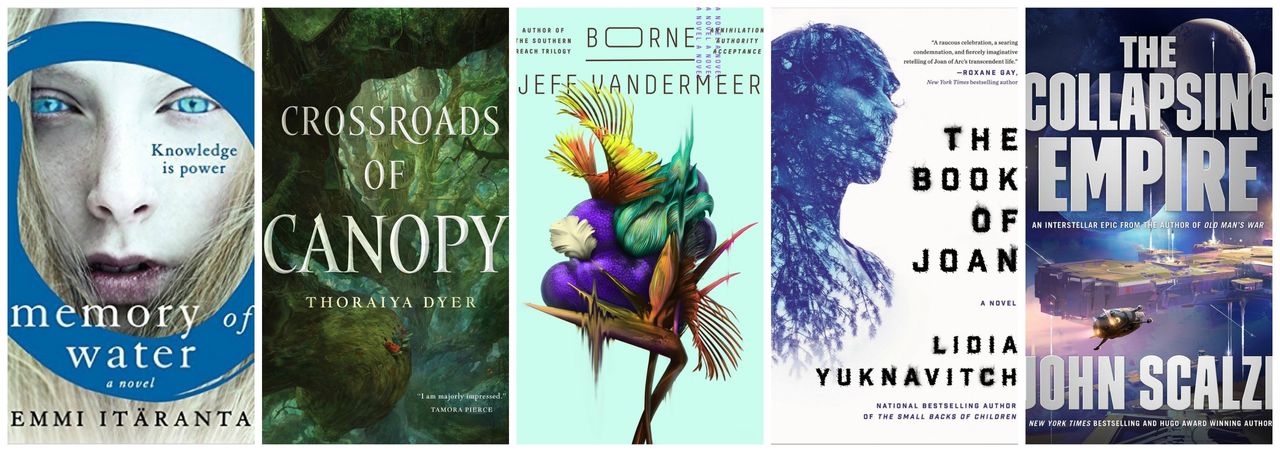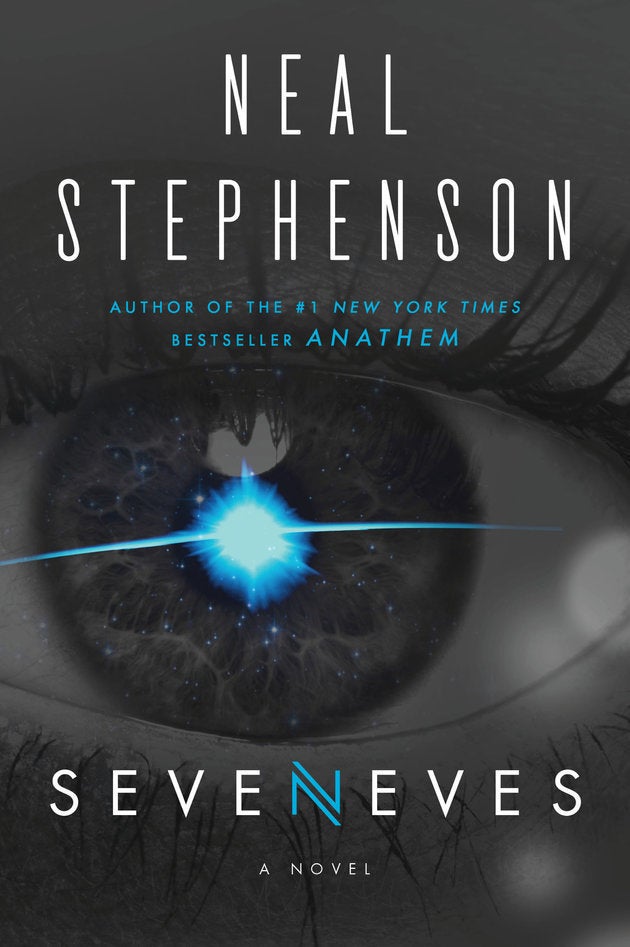The day before Donald Trump’s inauguration, Wired reported on a story that could be misconstrued as a thrilling work of eco-fiction. Anticipating the new president’s ambivalence towards climate change, scientists raced to back up their research, fearing that years’ worth of online evidence and solutions could be erased or otherwise marred.
The pressure was on. Trump’s team had at this point confirmed that some data would be taken down from the Environmental Protection Agency’s website. So, data was pitted against rhetoric, fact against alternative fact.
Of course, as sci-fi writer Ursula K. Le Guin pointed out last week in a letter to The Oregonian, alternative facts are different from fiction. “A lie is a non-fact deliberately told as fact,” she wrote. “Santa Claus is a fiction. He’s harmless. Lies are seldom completely harmless, and often very dangerous.
Fiction, on the other hand, can entertain, inform, and speculate. In the case of science fiction, it can provide human context for facts and data, supporting it rather than refuting it. Possible solutions to urgent issues such as climate change can be explored. Though speculative fiction authors — including Margaret Atwood, Kim Stanley Robinson, and Barbara Kingsolver — have flocked to the topic in recent years, climate change has been addressed in fiction for decades, dating back to J.G. Ballard’s imagined natural disasters.
In response to the removal of climate change references from the White House’s website, we asked a range of science fiction authors ― some of them new to the genre, others prolific editors of anthologies ― to discuss speculative or fictional solutions to how climate change is discussed (and in some cases ignored) today. Their answers, which range from imagined scenarios to heartfelt pleas, are below:

Jeff VanderMeer, author of Borne and the Southern Reach trilogy
“As we come closer to catastrophe, we know what we need to do: leave fossil fuels in the ground, eat less meat, drive less, develop clean energy while eschewing false solutions in that arena, protect biodiversity, support indigenous people’s claims to the land, understand that environmentalism and social justice are often intertwined, stop treating plastic as disposable, find a model other than ‘growth,’ recognize ‘progress’ as a word that requires interrogation, and understand that business as usual is toxic and costly.
“The solutions a fiction writer can provide, the speculation, is perhaps edging toward offensive in a policy context ― because we have scientists telling us what we need to do and they are the experts. What we as writers need to do is better portray the complex truth of our situation.
“Other than that, we know that breakthroughs in use of fungi and other soft tech including biomimicry may help us but if they do not ultimately someone will open the Pandora’s Box of a vast geoengineering project. I am unwilling to speculate in that direction given the possible side effects. That fact is, again, we know what we need to do and we know what the consequences are otherwise.”
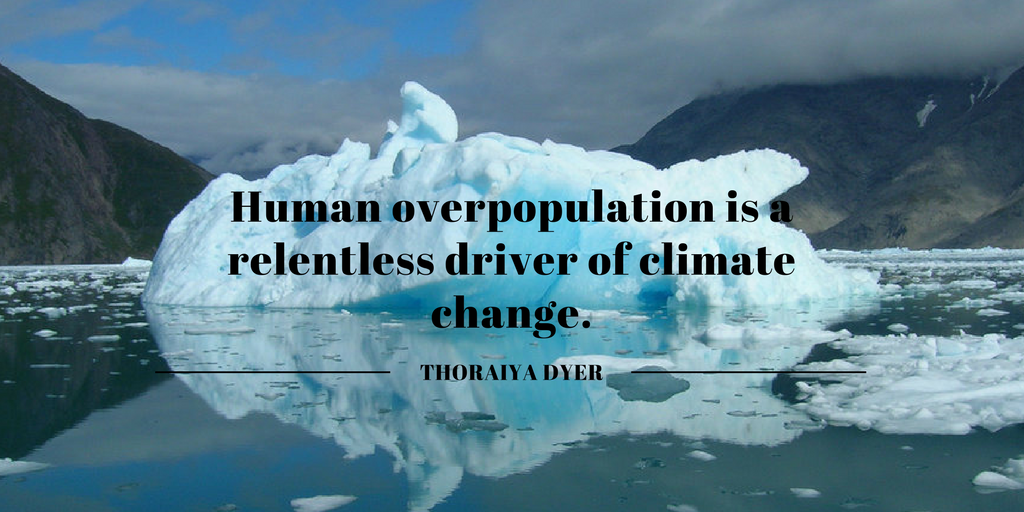
Thoraiya Dyer, author of Crossroads of Canopy
“Human overpopulation is a relentless driver of climate change. Yet many believe it’s their inviolable right to reproduce. There’s no point in building high-tech, zero-footprint, energy-generating homes if we’re immediately going to fill them and need more. With robots doing most of the work anyway, families could share children ― not just by alternating weeks of custody, but by mixing genes so that each child has four biological parents.
“Today, a child can have three biological parents ― two for the chromosomes in the nucleus and another to replace defective mitochondrial DNA. But that doesn’t seem especially motivational. You can’t see yourself in a child’s mitochondria.
“What if we could separate phenotypical and psychological traits in a person’s gametes? You could team up with another couple for a chance at a baby with, say, your couple’s fabulous looks and that couple’s generous and happy-go-lucky personality. Then swap around when it’s time for a sibling. Four humans in one generation, two humans in the next, and a whole lot of pooled resources for getting them to adulthood.”
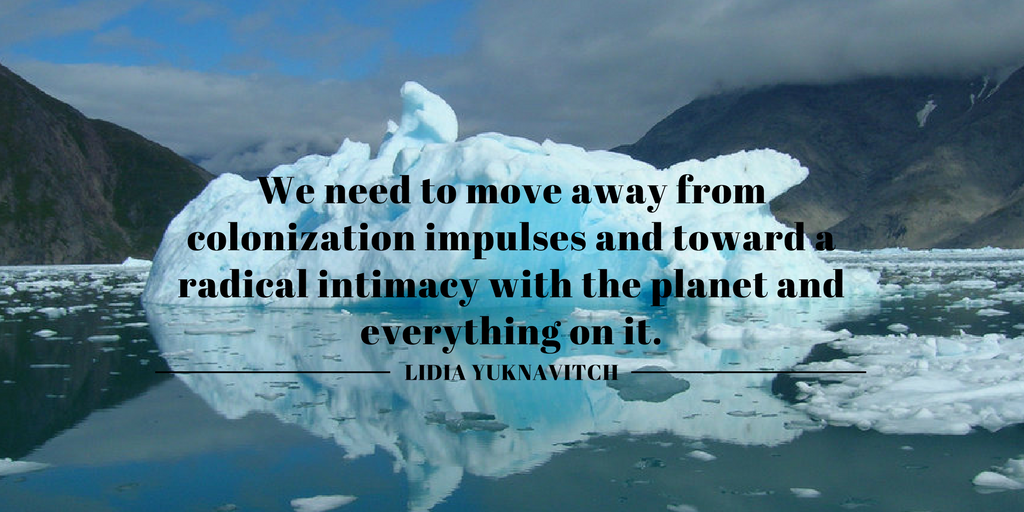
Lidia Yuknavitch, author of The Book of Joan
“Human mammals need to radically re-envision their relationships to the planet as well as their ability to listen and learn to the living environments around them. We need to learn earthspeak. The earth and her eco-systems and the planetary relationship to the cosmos all have a lexicon, syntax, diction. The earth is screaming her head off. Ask NASA or read what Carl Sagan left us or call up Neil deGrasse Tyson or Stephen Hawking. The earth has been waiting for us to develop and fully realize an actual relationship rather than a conquering and exploiting act of murder. We need to move away from colonization impulses and toward a radical intimacy with the planet and everything on it. A love that is as deep as the one we claim we have for life partners or children. We need to de-hierarchize our love and compassion and redirect that force as a renewable and sustainable energy. Yes, I’m serious. Humans are not the only thing to love. And it will take fight.
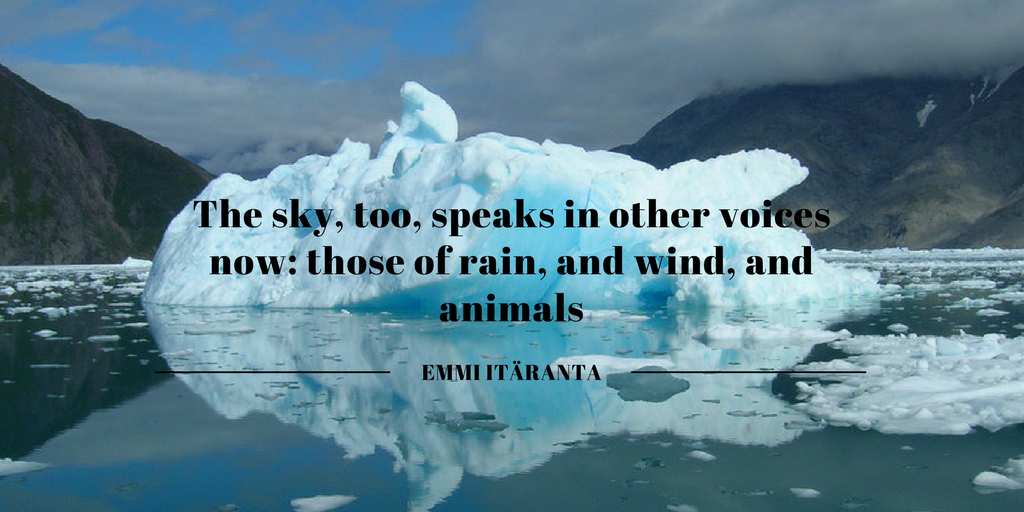
Emmi Itäranta, author of Memory of Water
[Itäranta opted to provide a fictional scene.]
“Since private car use was phased out in the city, the soundscape is different. The best place to observe this is a scenic café on top of one of the skyscrapers. You order a cup of shade-grown coffee and find a table at the terrace, among the constant trickle of water, as the building recycles moisture and nutrients in order to feed the gardens in its offices.
“A metallic clang catches your attention. Construction workers are removing the scaffolding from a footbridge grown from living sycamore trees. You have watched it take shape. On weekdays you cross it to catch your train.
“A murmuration of starlings takes wing from the foliage. The sky, too, speaks in other voices now: those of rain, and wind, and animals. You scan it for planes, but you spot none.
“You glance at the news monitor inside the café. You recognize the archive footage. You were there. You made your protest sign at home, a wall of a cardboard box on which you painted the words ‘HANDS OFF THE ARCTIC.’
“The glistening panels on rooftops turn as they follow the setting sun, whirring like insects’ wings. Soon the street lamps will begin to glow softly, dispel the rising dark.”
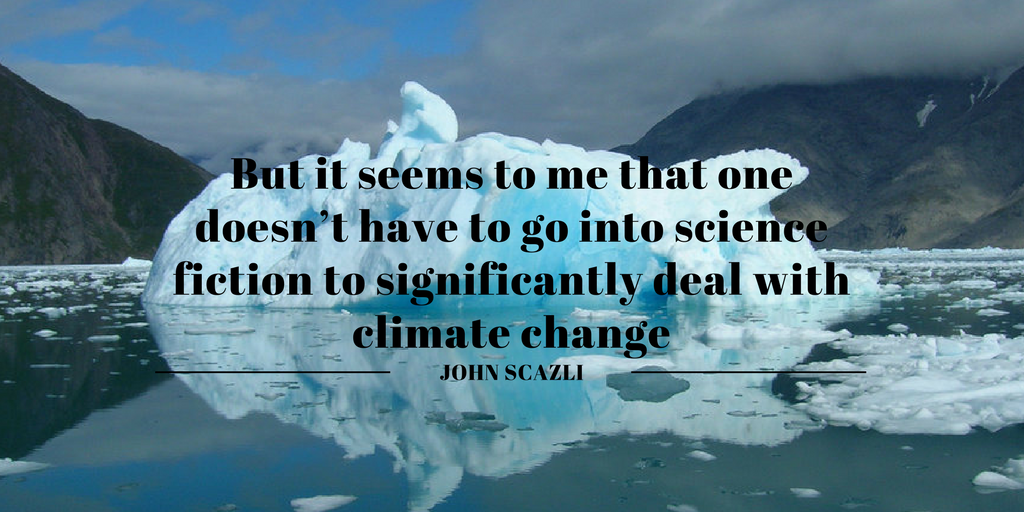
John Scalzi, author of The Collapsing Empire
“There are lots of science-fictional ways to deal with climate change. My favorite, from a ridiculously overengineered point of view, is the one where we induce global dimming to lower the overall temperature of the earth, mostly by throwing particulates of some sort, or even tiny little mirrors into the atmosphere or near space. Never mind what that might do to weather patterns and so on ― unintended effects are half the fun!
“But it seems to me that one doesn’t have to go into science fiction to significantly deal with climate change. One simply has to commit to remedies we already have available, phasing out energy sources like coal and hydrocarbons in favor or things like solar and wind.
“The science fictional idea here is not the technology involved, but the idea there is a global will to make the switch in the face of (basically) greed and inertia. Let’s see!”
